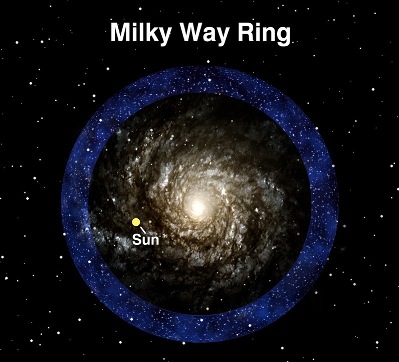Rogue black holes may wander the Milky Way
 Washington, April 30 : New calculations by scientists suggest that hundreds of massive rogue black holes, left over from the galaxy-building days of the early universe, may wander the Milky Way.
Washington, April 30 : New calculations by scientists suggest that hundreds of massive rogue black holes, left over from the galaxy-building days of the early universe, may wander the Milky Way.
The calculations have been made by Ryan O’Leary and Avi Loeb from the Harvard-Smithsonian Center for Astrophysics.
Though the research indicates that rogue black holes may roam the Milky Way, the good news is that the Earth is safe, as the closest rogue black hole should reside thousands of light-years away.
Astronomers are eager to locate them, though, for the clues they will provide to the formation of the Milky Way.
“These black holes are relics of the Milky Way’s past,” said Loeb. “You could say that we are archaeologists studying those relics to learn about our galaxy’s history and the formation history of black holes in the early universe,” he added.
According to theory, rogue black holes originally lurked at the centers of tiny, low-mass galaxies. Over billions of years, those dwarf galaxies smashed together to form full-sized galaxies like the Milky Way.
Each time two proto-galaxies with central black holes collided, their black holes merged to form a single, “relic” black hole.
During the merger, directional emission of gravitational radiation would cause the black hole to recoil.
A typical kick would send the black hole speeding outward fast enough to escape its host dwarf galaxy, but not fast enough to leave the galactic neighborhood completely.
As a result, such black holes would still be around today in the outer reaches of the Milky Way halo.
Hundreds of rogue black holes should be traveling the Milky Way’s outskirts, each containing the mass of 1,000 to 100,000 suns.
They would be difficult to spot on their own because a black hole is visible only when it is swallowing, or accreting, matter.
One telltale sign could mark a rogue black hole: a surrounding cluster of stars yanked from the dwarf galaxy when the black hole escaped.
Only the stars closest to the black hole would be tugged along, so the cluster would be very compact.
Due to the cluster’s small size on the sky, appearing to be a single star, astronomers would have to look for more subtle clues to its existence and origin.
The number of rogue black holes in our galaxy depends on how many of the proto-galactic building blocks contained black holes at their cores, and how those proto-galaxies merged to form the Milky Way.
Finding and studying them will provide new clues about the history of our galaxy. (ANI)